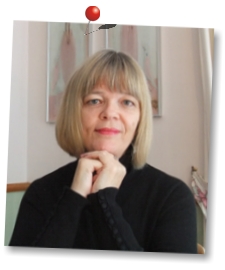Time for Crime
Until relatively recently, I thought I didn’t like crime fiction. Since devouring Agatha Christies at school, as we all did, nothing from this genre had managed to whet my reading appetite: I’d decided that even the more sophisticated how and why dunnits as opposed to whodunnits tended to be more about plot than character, to deal in crude stereotypes and were often stylistically constipated. Maybe for 50 years ( agh!) I was simply reading the wrong books. Or maybe crime has expanded to the extent that now there’s something for everyone ( Recent figures suggest that crime is worth £200m annually, outstripping other genres) Perhaps high class crime drama on telly – Happy Valley, Scott and Bailey, Line of Duty – with strong female roles fuelled my interest. Without doubt, having a couple of my own crime stories published didn’t go amiss. Whatever the reason, I’m hooked. I particularly love psychological thrillers such as the recently televised Apple Tree Yard which ranks as one of my all time favourite page turners. I’ll now try any crime novel, with the obvious caveat that Jeffrey Archer will always remain a no no.
Graham Norton’s Holding might well be shelved under ‘cosy crime’ in the sense that it’s about a small rural Irish town shocked by the discovery of some human bones on a local building site and the reader is never in any doubt that the answer will lie within the tight-knit community which ( surprise, surprise, ) is riddled with secrets. Yet I was expecting a comic novel ( yes, it is the Graham Norton !), possibly even with shades of Father Ted, and it wasn’t. In fact, a sense of melancholy underpinned much of the book. Holding was quite rightly well reviewed for its pacing, plotting and the strength of its female characterisation. Interest for the reader lies primarily in the characters’ back stories rather than the crime itself.
Julie Myerson’s Something Might Happen goes even further: the person responsible for the gruesome murder of Lennie, a wife, mother and potter, is never found. The focus of the book is on the lives of those affected by her death, in particular her best friend Tess. The murder forces Tess to examine her own relationships: with her husband, her children, Lennie’s husband ( her former lover ) and the arrival of a new love interest, the family liaison officer. Such is the strength of the writing that never discovering the identity of the murderer, let alone why s/he acts as they did (Lennie’s heart is cut out ) does not result in an unsatisfactory feel to the novel. My only niggle with Something Might Happen is that I do struggle with the complete absence of speech marks, particularly when the text is a naturalistic one in a contemporary setting.
Last year I went to Harrogate Crime Festival which I chiefly remember for its BIGNESS. There’s a massive Alice in Wonderland type grass covered chair outside The Old Swan Hotel where the festival is always held ( of course I took a selfie sitting on it- the chair, not the hotel) ) and you are given a number of HUGE bulky crime novels as freebies. ( As the average age at any lit fest must be 50+, I couldn’t help wondering what percentage of the audience reported to their GP the following week with arm strain.) Incidentally, The Old Swan Hotel is where Agatha Christie holed up after her famous 11 day disappearance in 1926. While checking this date I discovered that meanwhile her husband had fled with his mistress to Godalming: this is where I went to school. Only connect… as E.M. Forster famously said or holy shit as I did.
Talking of crime related events, on Wednesday September 20th I’m really looking forward to chairing an event: A Life of Crime featuring two regional crime writers, Nick Quantrill and June Taylor, both of whom I admire. If you’re local, please do come along. In November there’s the Hull Noir Festival with some very big names which promises to be stupendous. It would be criminally negligent not to attend either or both of these if you can!

